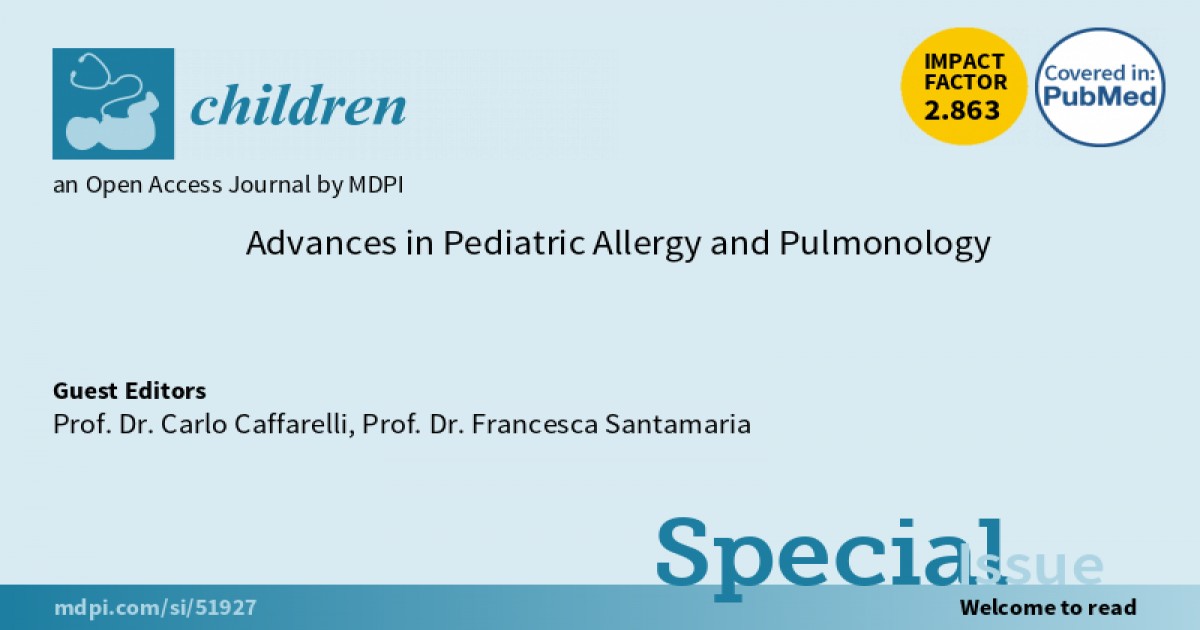Advances in Pediatric Allergy and Pulmonology
A special issue of Children (ISSN 2227-9067). This special issue belongs to the section "Pediatric Allergy and Immunology".
Deadline for manuscript submissions: closed (15 November 2020) | Viewed by 21619

Special Issue Editors
Interests: asthma; atopic dermatitis; rhinitis; food allergy; anaphylaxis; immunodeficiencies; vaccine; allergy prevention; drug
Special Issues, Collections and Topics in MDPI journals
Interests: pediatric chronic pulmonary disorders; recurrent pneumonia in children; pediatric severe asthma; primary ciliary dyskinesia; sleep studies
Special Issue Information
Dear Colleagues,
Allergic and lung diseases are two of the most exciting fields in children. Recent understanding of pathomechanisms has led to identifying new diagnostic and therapeutic methods, while component-resolved diagnosis has changed the diagnostic approach as well as the clinical decision. New treatments, including monoclonal antibodies, an allergen specific immunotherapy, have increased the control of diseases.
In addition, pediatric patients may benefit from innovative measures that have been shown to prevent the development of allergic and lung diseases. An improved awareness of pathogenesis and treatment involves an enhancement of the quality of life of children and their parents.
The aim of this Special Issue is to bring up-to-date information on prevention, epidemiology, pathogenesis, and treatment of children with allergies or lung diseases.
We remain at your disposal for additional questions.
Prof. Dr. Carlo Caffarelli
Prof. Dr. Francesca Santamaria
Guest Editors
Manuscript Submission Information
Manuscripts should be submitted online at www.mdpi.com by registering and logging in to this website. Once you are registered, click here to go to the submission form. Manuscripts can be submitted until the deadline. All submissions that pass pre-check are peer-reviewed. Accepted papers will be published continuously in the journal (as soon as accepted) and will be listed together on the special issue website. Research articles, review articles as well as short communications are invited. For planned papers, a title and short abstract (about 100 words) can be sent to the Editorial Office for announcement on this website.
Submitted manuscripts should not have been published previously, nor be under consideration for publication elsewhere (except conference proceedings papers). All manuscripts are thoroughly refereed through a single-blind peer-review process. A guide for authors and other relevant information for submission of manuscripts is available on the Instructions for Authors page. Children is an international peer-reviewed open access monthly journal published by MDPI.
Please visit the Instructions for Authors page before submitting a manuscript. The Article Processing Charge (APC) for publication in this open access journal is 2400 CHF (Swiss Francs). Submitted papers should be well formatted and use good English. Authors may use MDPI's English editing service prior to publication or during author revisions.
Keywords
- food allergy
- asthma
- anaphylaxis
- recombinant allergen
- allergen-specific immunotherapy
- urticaria
- atopic dermatitis
- allergic rhinoconjunctivitis
- allergy prevention
- chronic pulmonary disorders
- recurrent pneumonia







